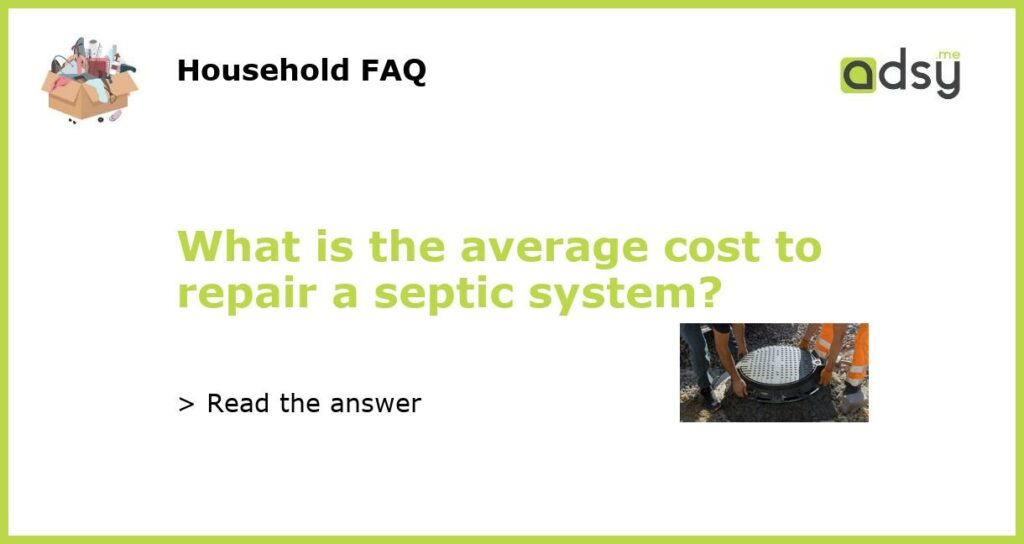Understanding the Average Cost to Repair a Septic System
When it comes to home repairs, one area that can cause a considerable amount of stress and anxiety is the septic system. Septic system failures can lead to messy and expensive repairs, not to mention potential health hazards. So, what is the average cost to repair a septic system? Let’s explore this question in more detail.
The Factors that Influence Septic System Repair Costs
The cost of septic system repairs can vary greatly depending on several factors. Some of the key factors that influence the average cost include:
- System type: Different types of septic systems require different repair methods and materials, which can impact costs.
- Extent of damage: The severity of the issue and the extent of the damage to the septic system will play a significant role in determining the overall repair costs.
- Access to the system: If the septic system is easily accessible, repairs may be less costly. However, if the system is buried or difficult to reach, additional labor and equipment may be required, increasing the overall cost.
- Permits and regulations: Depending on where you live, there may be specific permits and regulations that need to be followed during septic system repairs. These requirements can add to the overall cost.
Typical Repair Costs for Common Septic System Issues
While the average cost to repair a septic system can vary, here are some typical repair costs for common septic system issues:
- Septic tank cleaning: On average, a septic tank cleaning can cost anywhere from $200 to $600, depending on the size of the tank and the location of your property.
- Drain field repair or replacement: Repairing or replacing a drain field can range from $2,000 to $10,000 or more, depending on the size of the area and the extent of the damage.
- Broken pipes or fittings: Repairing broken pipes or fittings within the septic system can cost an average of $500 to $1,500, including labor and materials.
- Cracked septic tank: Fixing a cracked septic tank typically costs between $500 and $3,000, depending on the severity of the crack and the materials needed for repair.
- Sewage backup: If you experience a sewage backup in your home, cleaning up the mess and repairing the septic system can cost anywhere from $1,000 to $10,000 or more, depending on the extent of the damage.
How to Minimize Septic System Repair Costs
While septic system repairs can be costly, there are several steps you can take to minimize the overall expense:
- Regular maintenance: Properly maintaining your septic system by having it pumped regularly and avoiding flushing harmful substances can help prevent costly repairs in the future.
- Fix issues promptly: If you notice any signs of septic system problems, such as slow drains or foul odors, address them promptly. Ignoring these issues can lead to more extensive damage and higher repair costs.
- Work with reputable professionals: When it’s time for repairs, make sure to hire a reputable septic system repair company. Look for experienced professionals who are licensed and insured to ensure quality work and avoid additional problems down the line.
- Consider a warranty: Some septic system repair companies offer warranties on their work. Investing in a warranty can provide peace of mind and potentially save you money on future repairs.
The average cost to repair a septic system can vary based on several factors, such as the type of system, the extent of damage, accessibility, and permits required. Typical repairs may include septic tank cleaning, drain field repair or replacement, fixing broken pipes or fittings, repairing cracked septic tanks, and cleaning up sewage backups. To minimize septic system repair costs, focus on regular maintenance, addressing issues promptly, working with reputable professionals, and considering a warranty. By taking these steps, you can help keep your septic system in good working order and potentially save money in the long run.

